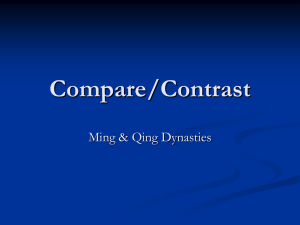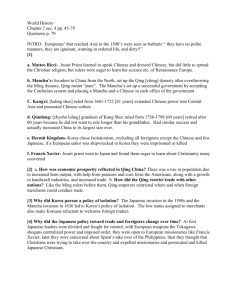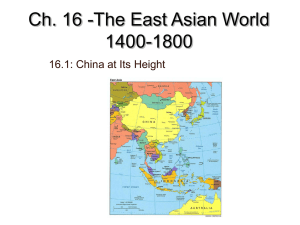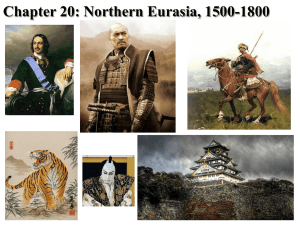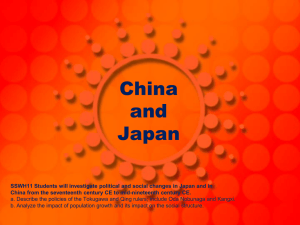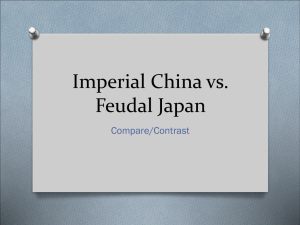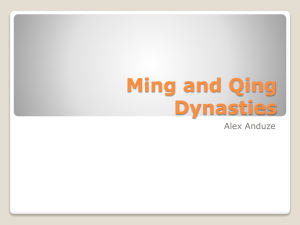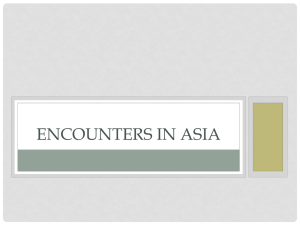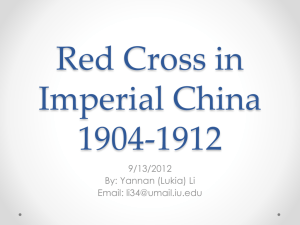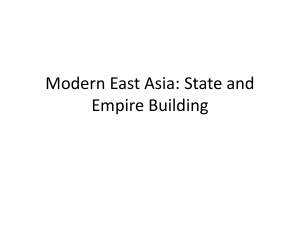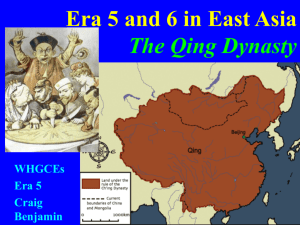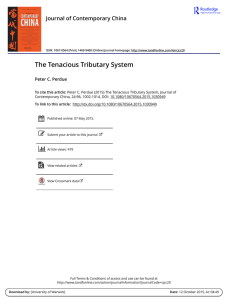Ming and Qing China
advertisement
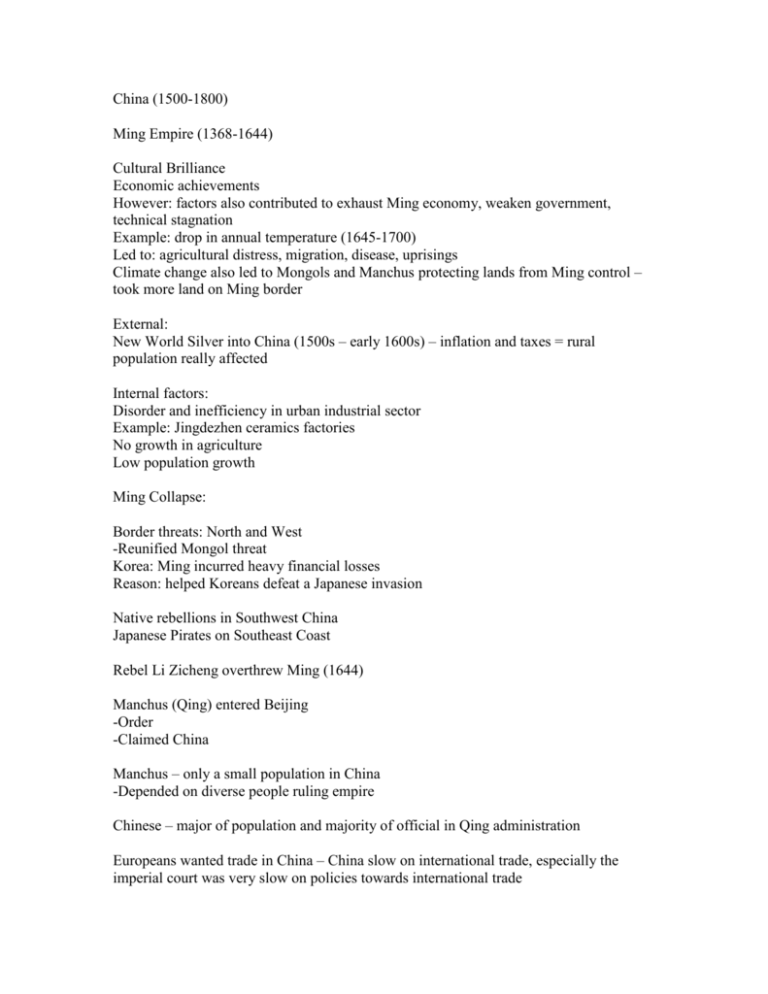
China (1500-1800) Ming Empire (1368-1644) Cultural Brilliance Economic achievements However: factors also contributed to exhaust Ming economy, weaken government, technical stagnation Example: drop in annual temperature (1645-1700) Led to: agricultural distress, migration, disease, uprisings Climate change also led to Mongols and Manchus protecting lands from Ming control – took more land on Ming border External: New World Silver into China (1500s – early 1600s) – inflation and taxes = rural population really affected Internal factors: Disorder and inefficiency in urban industrial sector Example: Jingdezhen ceramics factories No growth in agriculture Low population growth Ming Collapse: Border threats: North and West -Reunified Mongol threat Korea: Ming incurred heavy financial losses Reason: helped Koreans defeat a Japanese invasion Native rebellions in Southwest China Japanese Pirates on Southeast Coast Rebel Li Zicheng overthrew Ming (1644) Manchus (Qing) entered Beijing -Order -Claimed China Manchus – only a small population in China -Depended on diverse people ruling empire Chinese – major of population and majority of official in Qing administration Europeans wanted trade in China – China slow on international trade, especially the imperial court was very slow on policies towards international trade 16th Century = Portugal, Spain, Dutch – limited access to Chinese trade 17th Century = Dutch East India Company – major European trader in Indian Ocean Catholic Missionaries – Travelled with Spanish and Portuguese traders -Had success in converting Chinese elites Jesuits came to China too: -Jesuit Matteo Ricci (1552-1610) mastered the Chinese language and culture = gained access to imperial court Qing Dynasty (1644-1912) ↓ “pure” (Manchu Dynasty) – people from Manchuria invaded China. Emperor Kangxi (1661-1722) -Executed chief agent and took formal control of government in 1669 at 16 years old -Intellectual prodigy Successful military commander Expanded territory Stability in government Made China’s frontier safe. Enhanced science, medicine, and math. Kangxi ventured outside the Forbidden City many times. Queues – pigtails worn by Manchu men and Chinese men under Manchu rule. -Showed submission to Manchu rule. -Intermarriage between Chinese and Manchus were forbidden. Incorporated Mongolian, Tibetan, Korean, Chinese ideas and technical knowledge European knowledge and technology Example: mapmaking, astronomy, pharmaceutical knowledge -Jesuits taught these fields -Jesuits revised religious teachings = allowed Chinese converts to practice Confucian ancestor worship -Compromise really upset the Pope -Chinese Transmission of technology to Europe: Early form of inoculation against smallpox and management technology of huge imperial porcelain factories Chinese Influence: Exchange of ideas between Qing and Jesuits flowed back and forth Qing wealth increased = Europeans interested in silk, tea, porcelain, other decorative items, and wallpaper Jesuit descriptions of China led people wanting to visit China Example: Voltaire = felt Qing Emperor was benevolent despots and philosopher-kings -Felt Europeans can learn from China Qing – eager to expand trade but wanted to tax trade and make it more efficient Wanted to also control piracy and smuggling Result: Qing - single market point for each foreign sector For those coming into the South China Sea = Canton -System worked well until late-1700s Some other cities used as market points: Macao, and Ningbo. ↓ Portuguese (1514) Emperor Qian-long (1736-1795). China reached its greatest in land size: (Taiwan, Tibet, Chinese Central Asia, and Mongolia now included) Late 1700s – British East India Company and other English traders believed China held a vast market -Europeans wanted unlimited profit Also: British Parliament worried about the flow of British silver into China – opening Chinese market = more English traders = will end nearly bankrupt British East India Company 1793-1794: British Lord Macartney = diplomatic mission -wanted China to open its market and reverse trade system Failure: Also Dutch, French, Russians also failed in opening Chinese restrictions Qing Peace and temporary increase in agriculture Reason = new American and African crops = population explosion (350 – 400 million in late- 1700s) Result: Environmental stress, deforestation, erosion, silting of rivers and canals, flooding It was localized misery, migration, increase in crime, and local rebellions Territory and population increased Number of officials remained the same Qing depended upon local elites to maintain local order Unable to: -enforce tax regulations -control standards for government jobs -prevent decrease in revenues, increased corruption, and increase in banditry during the late 1700s
